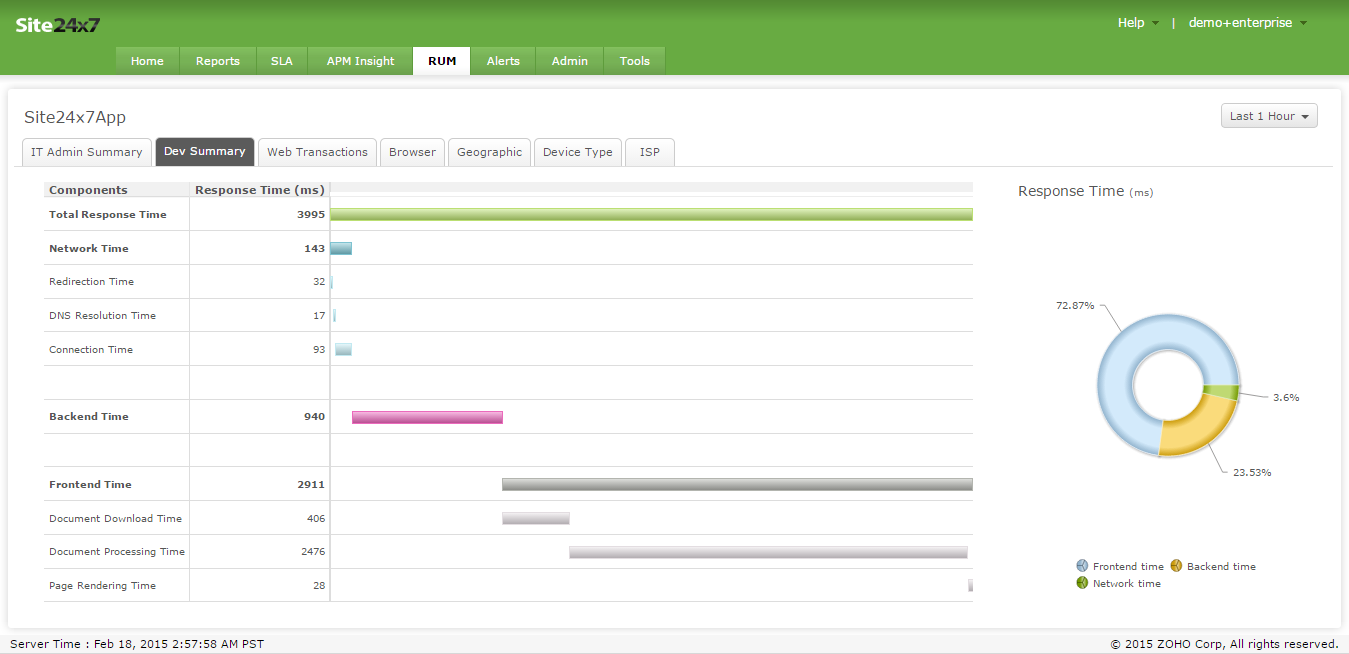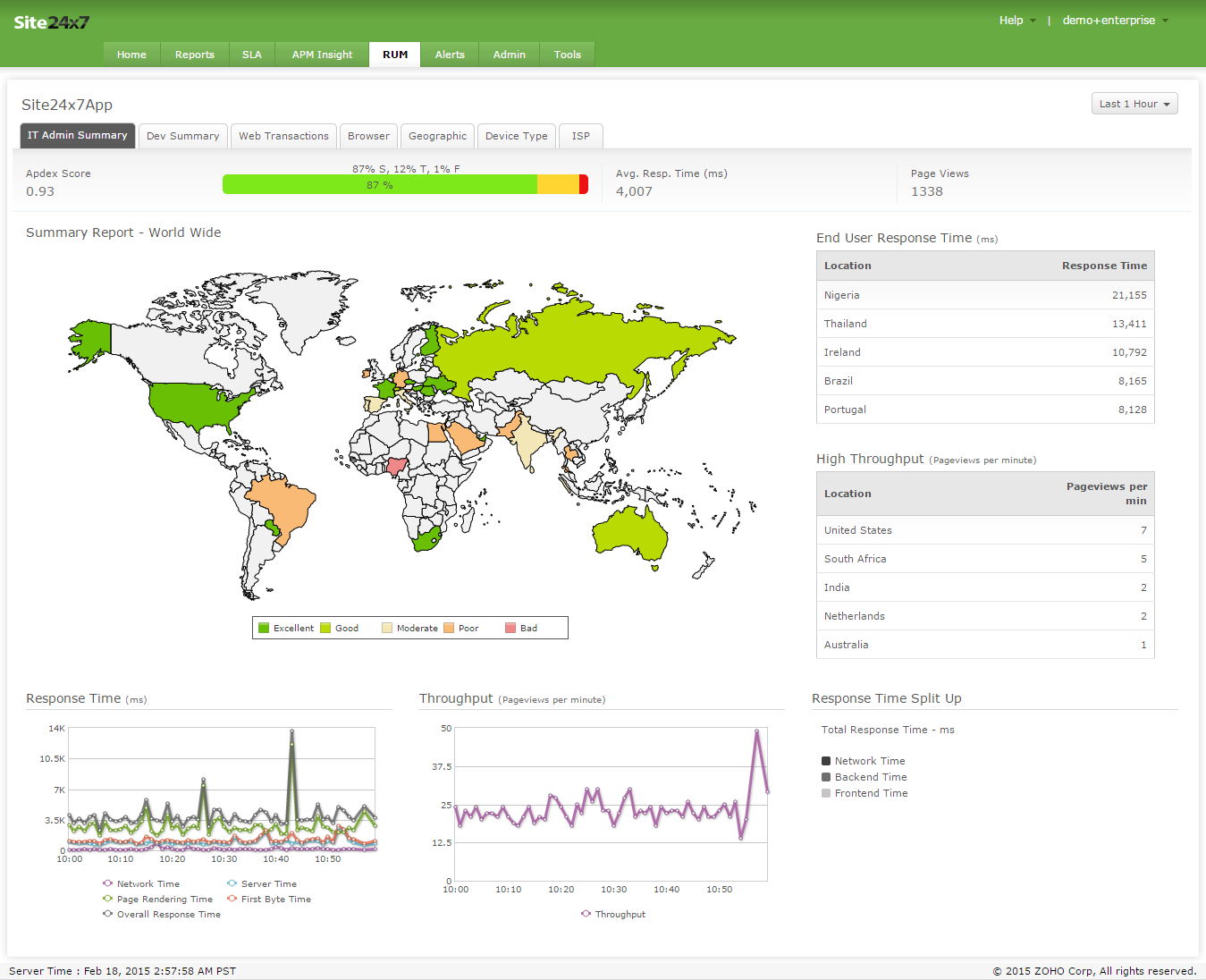Why Your IT Monitoring Strategy Should Include Synthetic and User Monitoring
Your site may have already felt the scary aftereffects of a mobile or shopping experience gone wrong this past holiday season…without even knowing it.
In fact, Google reported 20% lost revenue and traffic from a mere half a second increase in page load time*. You don’t need to be reminded of the lost revenue, brand reputation damage and inconsistent user experiences that could hit your company big…in just seconds. Your users determine the success of your business, which is why it is vital to ensure quality Web and mobile performance on an ongoing basis.
But should your monitoring strategy be totally representative of data from your users…the livelihood of your site? One would think so, but you may be surprised that it’s not exactly that simple.
Real Users: Knowing How Your Site is Truly Performing for your Users
The reality is that whether Web applications are fast or not depends on the end-user’s perception. Therefore, the best way to protect Web revenue is to collect, track, alert and report on Web browser performance data directly from your users – from the moment they navigate to your Website until the Web page has fully loaded or a transaction is completed. This is exactly what you get with Real User Monitoring (RUM):
- Know exactly how your customers and users are experiencing your Website and/or internal Web applications for all geographies and locations
- Monitor every single Web path your users take
- Get a complete picture of user experience across browsers and devices
- Determine if code changes or architectural/infrastructure changes had the desired efforts or cause errors and/or performance degradations for your users
- Use RUM information to better inform your Web/mobile development roadmaps
- Real-User Monitoring Is Not Enough
But while RUM can keep tabs on every single path your users take, what about issues during light traffic periods when there are few visitors on your Website? After all, not every use case scenario for your web pages will be as highly trafficked as Black Friday or Super Bowl Sunday.
Additionally, when a web page is down, there is no user traffic and nothing to monitor/alert on, so you can easily miss early Web performance degradation indicators.
Adding Synthetic Web Performance Monitoring Into the Mix - the best of worlds
By adding synthetic monitoring into the mix, you’re “covering all your bases” and filling in any gaps in monitoring coverage from real user monitoring. It is the best way to proactively monitor your Website 24x7x365 to find Web performance problems before real end-users are impacted, and you’re ambushed by calls to the help desk. With Synthetic Web Performance Monitoring across multiple monitoring locations you will:
- Continuously monitor your Website even when there is little real end-user activity
- Detect early performance degradation signs
- Benchmark and compare your Web performance against your competitors
- Get immediate and actionable notifications with detailed information to troubleshoot and restore service levels, before poor user experiences
Synthetic monitoring in and of itself doesn’t give you an accurate picture of the real user experience, and you can easily miss performance problems for less visited Website paths not considered in your monitoring plans. The key here for your IT monitoring success involves filling in these gaps in coverage with real-user monitoring…and vice versa.
With Real-User Monitoring (RUM), you’ll get accurate insight into end-user experience…in real-time.~Get instant information about problems that affect real users who access websites and applications according to browser, platform, geography, ISP, and much more. Combine this with Synthetic Web Performance Monitoring, and you’ll be able to continuously monitor your Website from multiple locations, even when there aren’t any of those “real users” to speak of, and be proactive the moment site performance begins to degrade.
Ready for a complete IT monitoring strategy to usher your company into the New Year?
Try RUM and Site24x7 Web Performance Monitoring Services together as part the Site24x7 Advanced Pack, free for 30 days. No credit card needed. No downtime. Install in minutes. Get instant value and results…before your users can even call the help desk.
Good luck in your IT Monitoring Journey!
Topic Participants
Site24x7_Admin_US

